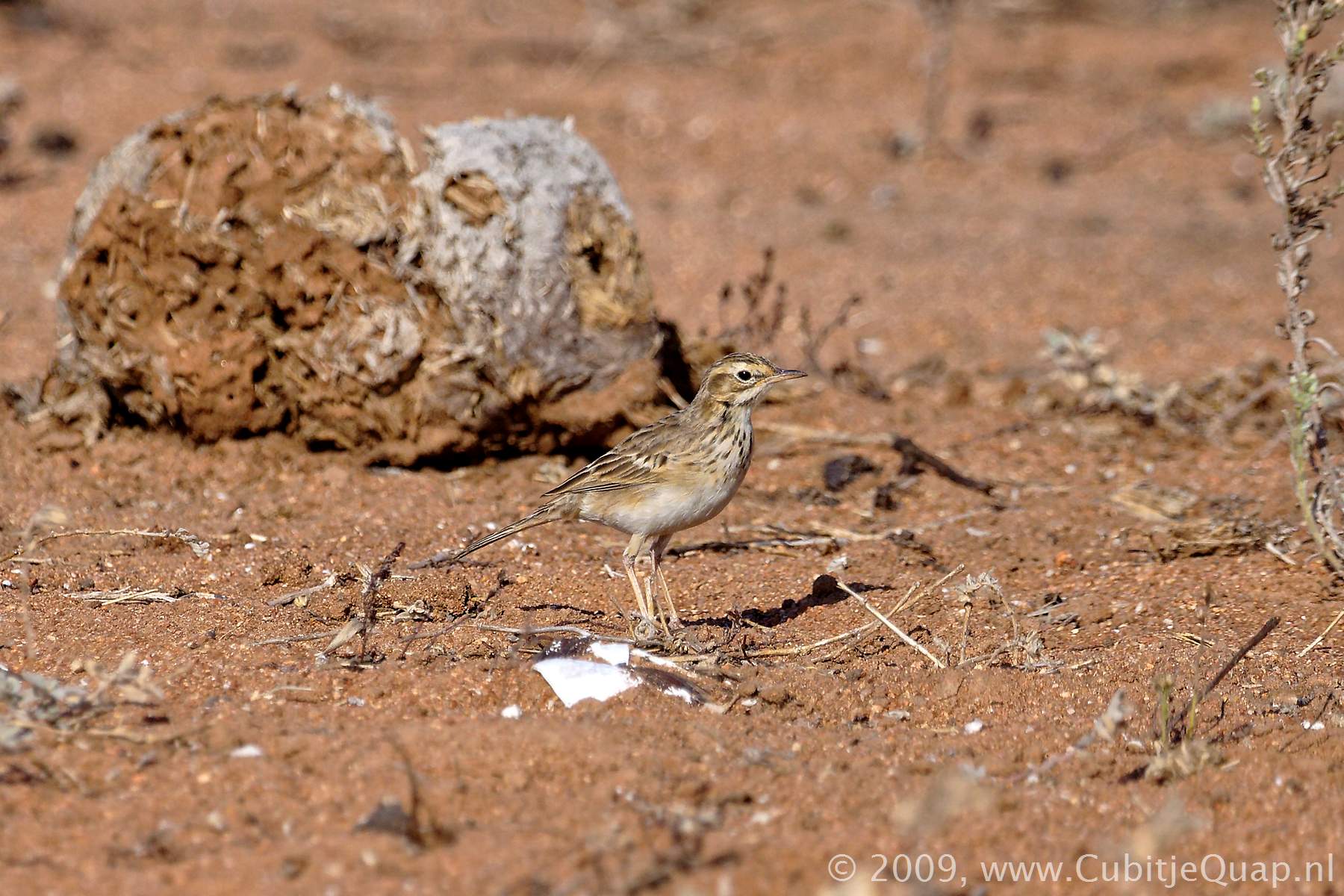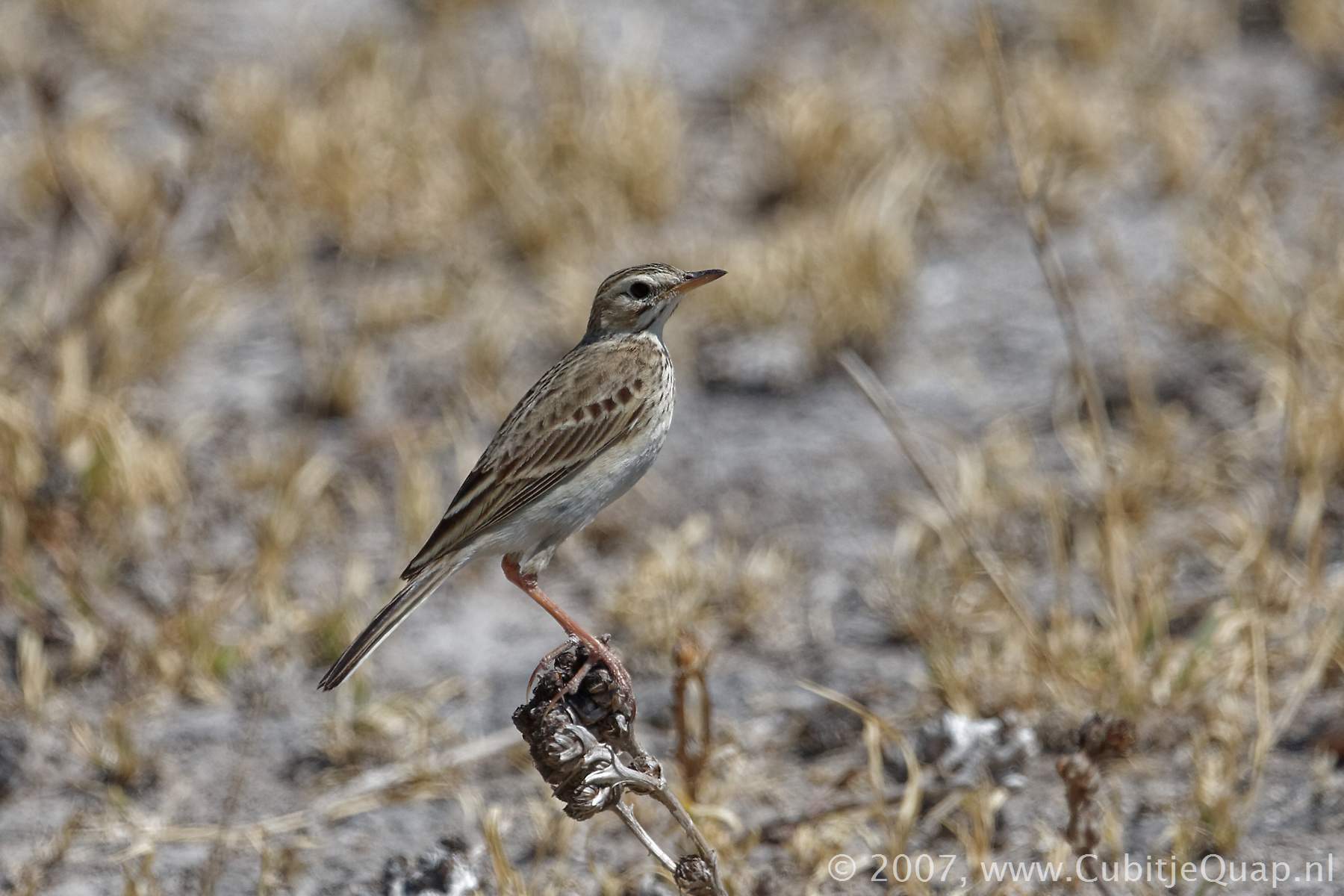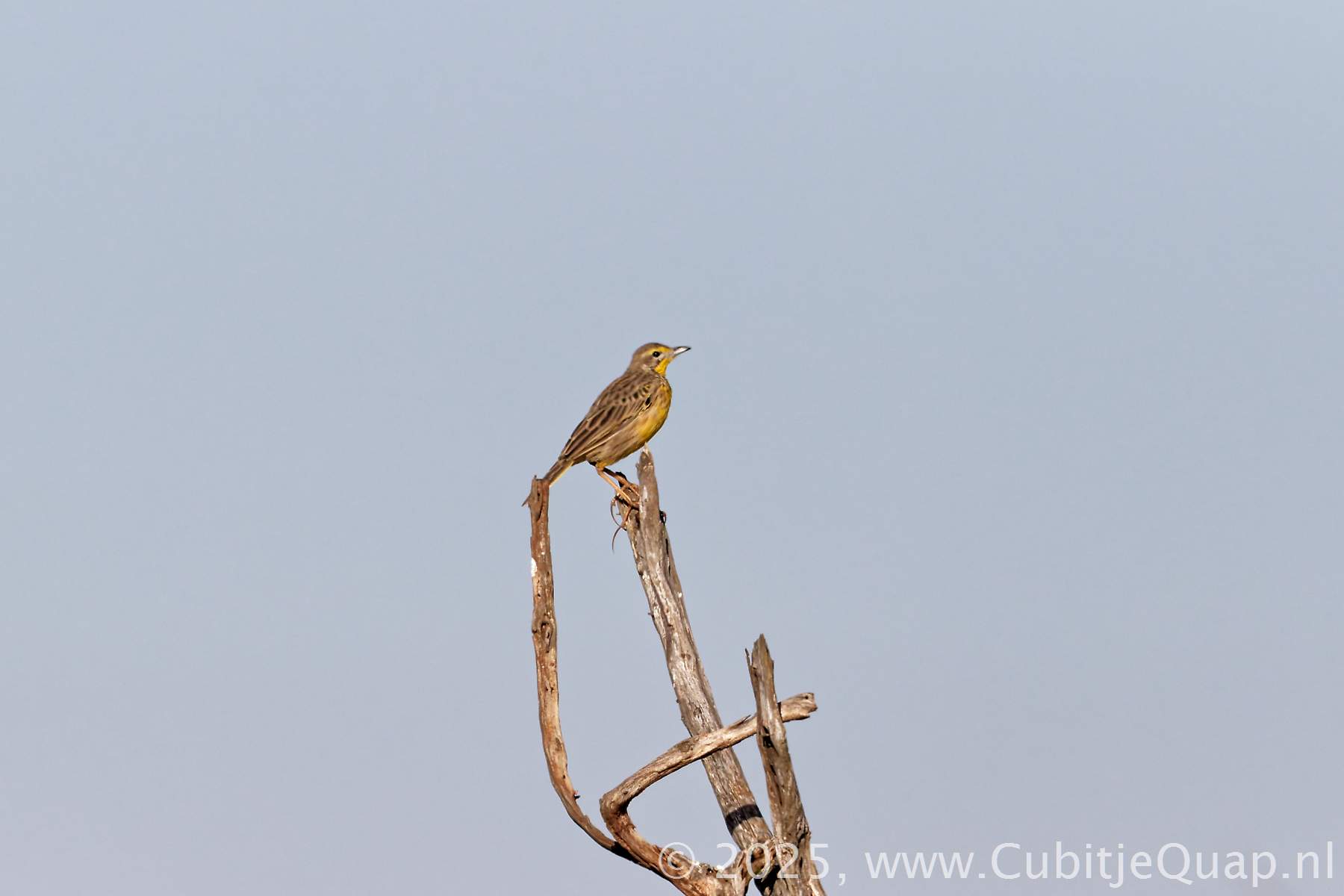Pipits Information page
Description
Drab, largely terrestrial passerines with a long slender bill, which are notoriously difficult to identify. The commonest species, African pipit, should be the default species to which all others are compared. Identification is extra complicated due to geographical variation and the effects of abration and solar bleaching of the plumage.They can easily be confused with larks, but they are generally larger and have a more horizontal stance. When not breeding, most species are gregarious. When they are disturbed on the ground, they rather crouch and run than fly. However, if they do fly, they tend to go to a prominent perch where they can observe the origin of the disturbance.
They will readdily join mixed foraging flocks and they will often congregate at recently burned areas where they get toasted prey and readily visible invertebrates. They are mostly insectivorous and attain virtually all their food on the ground. They will also eat invertebrates and even seeds.
They are monogamous and the males generally have distinctive territorial displays in which they call from conspicuous perches or while indulating display flights above the territory during which they rise up and then suddenly descend steeply to the ground. They nest in a cup of grass and rootlets, places at the base of grass tuft, shrublet or rock. They try to hide the nest by leaving it with an injury feigning display or they will land a short distance from the nest and then scurry in. They have clutches of 3 whitish eggs with usually heavy speckling. Incubation duties and care or young is shared by both adults.
Scientific names
Anthus = flowerBirds in this category
Interesting links
Wikipediafatbirder.com



